I used to think: “The earlier I see the mother, the better, because then I can clear some misunderstandings and help her get off to a good start with breastfeeding.” So, my first focus is: teach the women and their family during pregnancy and then try to see them as soon after the delivery as possible, preferable before the first bottle of formula is given….
However, I soon discovered that a newly delivered mother and especially the family surrounding her bed often isn’t interested in breastfeeding on that first day at all. The one thing they are concerned about is protecting this mother, making sure she gets her rest (very good!), to the extent that even the baby is cared for and fed by family, rather than mom… after all, mom is too tired, she has no milk, why disturb her rest?
One day, I was introduced by the hospital staff to a newly delivered mother. She had her baby only hours before I saw her. She had breastfed in the delivery room (great!), but no other feeds were given yet. The grandmother was first of all reluctant for me to see her daughter, but the new mother seemed interested and grandma agreed as long as I kept it short. As usually, the family told me that she didn’t have any milk yet. As I examined mom’s breast, I hand expressed some colostrum. With surprise in their voice the family said to each other “Oh, she already has milk.” When I discovered that the baby hadn’t had anything to drink for over four hours, I suggested we put her to the breast. “Oh no, the baby is asleep. We shouldn’t wake her. No, just leave her.” I then explained the importance of frequent feeds, allowing the baby to get small amounts of colostrum frequently to satisfy her needs. I also explained that frequent feeds would bring in mom’s milk faster. Eventually, they agreed to try to put the baby to the breast. She soon latched on and started sucking. After the baby had been on the first breast for a while, the family agreed that the baby had had enough, the mother needed rest and the baby needed to be put back in her cot. Again, I needed to explain the importance of offering both breasts at each feed, not limiting frequency and duration of the feeds. Whilst grandma was still a bit reluctant, mom turned onto her other side to give the baby the other breast. The family was amazed at how well the baby drank from that breast. “Look at her sucking! Yes, she already has milk!” Whether they’ll continue to feed on demand is still to be questioned, but in this case I was – with some effort – at least able to help this mother off to a good start. Unlike other mothers, whose family won’t let me near her on that first day, especially after a C-Section. Not to mention that during the first six hours after a C-Section mom is still attached to ECG and blood pressure monitors, nasal canula for oxygen, she has to lie flat on her back, not allowed to move or even have a small pillow. (At least that is the situation in “our local hospital.”) This certainly makes initiation of breastfeeding more of a challenge.
Even though moms and family might not be too eager to get lactation advice on that first day, this does change when problems have started and they discover – after having bottle-fed the first days – that the baby won’t latch, that they are painfully engorged or they encounter other problems. Now they are eager to receive my help and advice. Now they’re so thankful for all the input I can give. Too bad that solving problems isn’t as easy as preventing them.
